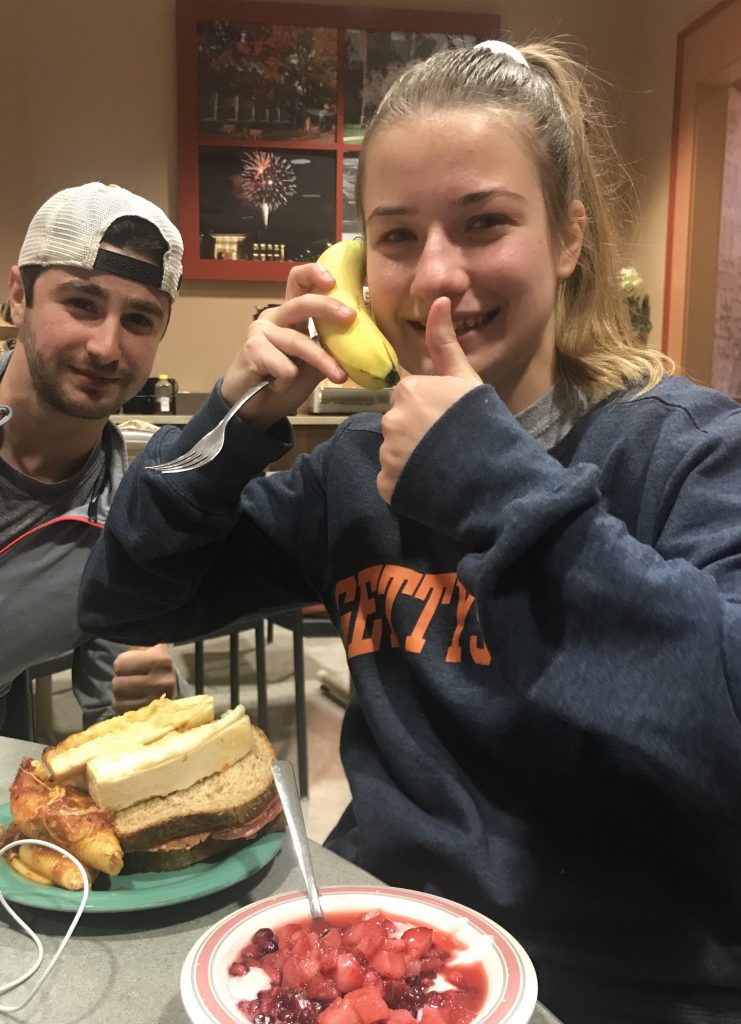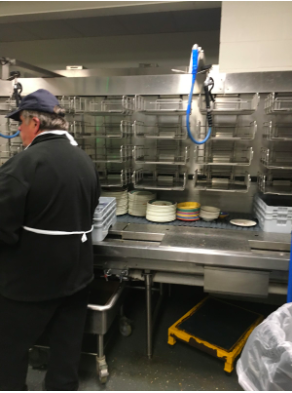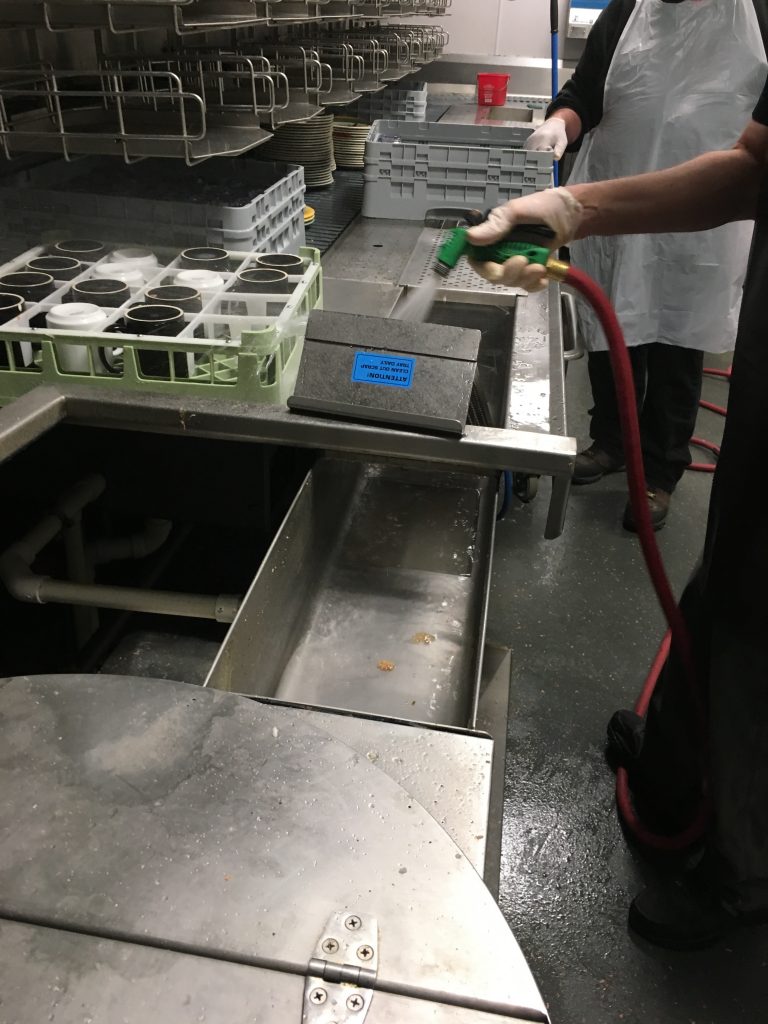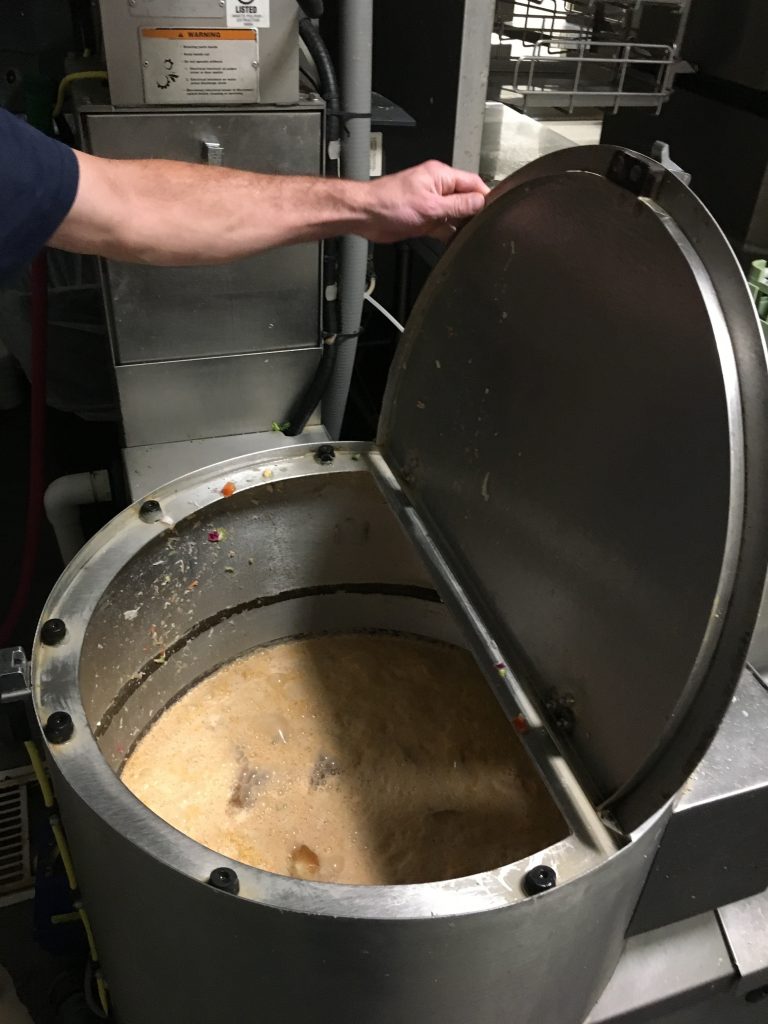We Are What We Eat On Campus: A Look at Food Sustainability at Gettysburg College
Sarah Westrick | 4 October 2019
“I guess I’ve never thought about sustainability,” laughs sophomore Robbie Wilkinson, as he finishes an Abe’s Fave’s hamburger.
Wilkinson is an active student. Between his classes, his fraternity, friends, and sports team, Wilkinson has no time to ponder if his plastic trays and silverware from bullet can be recycled if there is still sauce left in them.
Wilkinson’s responses are symptomatic of a larger campus culture, so we have to ask ourselves: what are we doing right in terms of food sustainability, and where are we dragging our feet? To get a better grasp on the college’s areas of sustainable strength and weakness, we looked at three key food factors on campus: what types of foods are provided for students to eat, disposable containers, and the sustainability of the providers.
In order for students to actively eat sustainably, they need to be presented with options. A study lead by Alejandro D. González shows that personal carbon footprints are significantly decreased not even when we stop eating meat altogether, but cut down on our frequency.
In addition, research headed by Barabara Burlingame shows that the “mediterannean diet”, which consists of a meal with meat around three or four times each week, more fish, and beef about once a month, has similar carbon impacts to going completely vegetarian. And, this switch would likely be a lot easier for hungry college students than fully abstaining from meat.
But eating is cultural. We eat three meals a day at roughly similar times because it is embedded in American life. And similarly, we eat the things that we do, eggs for breakfast, for instance, or a burger for lunch because that’s what seems right and natural. However, the college, as the provider and holder of administrative power, can choose to reshape these habits.
“I think that Servo does does a pretty good job at labeling vegetarian foods, but there should be more actual meals,” Sophomore Courtney Cholewa professes, referencing the fact that there is only one pre-made dish in the Servo “Veggie Corner” and that oftentimes the option can be as simple as lima beans, or tofu over white rice. Sure, students can add sauces, and the new mediterenean salad bar can make for more interesting combinations, but these options are still often bland and do not encourage meat-eating students to try items lower down on the food chain.
“I’m not vegetarian, but I’m trying to cut down on red meat and then also just meat in general,” Cholewa admits. She is right to be conscious of this. In addition to environmental benefits, eating less meat can also bring health benefits.

Not only should the college provide options for meatless or fish eating, but these options should be enticing to hungry students and placed front and center, rather than pushed to a “corner.”
But eating more sustainably does nothing to combat the massive plastic and paper waste the college creates. Cholewa is not alone. With little direction from the college, students are left to make their own decisions about how to dispose of all the plastic they are given.
The bullet hole does feature recycling bins next to each trash can, with small signs that briefly describe how to dispose of waste, but these signs do not hit at some of the situational questions that may arise, such as what can still be inside a container that gets recycled.
Other colleges, such as St. Mary’s College of Maryland, set aside bins for materials that may be composted, and encourage students to take out food in free, reusable as well as biodegradable containers.
While it is impressive that Servo maintains that they use only two moderately sized dumpsters, one for trash and the other for recycling (especially considering that this building feeds around 3,000 students a day), this is not the case for the Bullethole, where even food items eaten on site produce trash in the form of plastic utensils and wax paper wrapping. The items taken out, all packaged in plastic, are even worse.
The college has options to solve this problem: they could give out biodegradable containers and utensils. They could offer metal utensils to be used for students eating in the Bullethole. Even more ambitious, the Bullethole could sell reusable containers and encourage students to bring their own.
Introducing new systems requires time and money, but when pizza boxes from Bullet cannot physically fit in the recycling bin holes it’s clear that something needs to change.
Plastic and paper trash is one thing, but what about the emissions and waste that the food itself creates? Not a single student we talked to could name where their piece of chicken or yogurt had come from so we sat down with Dining Hall Supervisor Joe Wheeler, and asked for more insight on where the food students consume originates, and what kinds of practices go on during production regarding waste and carbon emissions.

Wheeler explained first and foremost that all food is inspected thoroughly upon arrival. Items in refrigerators are typically thrown out after 6 days if unused, which seems to be a relatively short amount of time. However, unused food is rare for servo.
Food that is prepared but not eaten is also rarely wasted, instead converted into a different meal. For example, leftover prime rib that is served on one day is converted into beef for the sandwich bar.
“Students often overlook the fact that meat at the sandwich bar originally came from a quality slab of beef served in a different meal days prior,” Wheeler states.
Dining Services also sources from three main providers: US foods, Feesers, and SYSCO. Upon further research we found that US Foods ranks at number two and SYSCO at number 1 on the top 10 eco-friendly food vendors list. As well, all three of these companies claimed to be taking strides toward becoming 100% sustainable. However, as a study run by Julain Parfitt notes, it is difficult to really estimate emissions and waste from supply companies, partly due to their scale.
Wheeler notes that Servo recycles whatever it possibly can. Oil from the deep fryers is reprocessed into an oil used to fuel a special work van parked behind the building, designed to run entirely off of used kitchen oil.
All food waste and napkins are placed into designated trash bins. Once these bins are full their contents are dumped onto a second conveyor belt system in the kitchen. Water is pumped through this conveyor system, which transports the organic waste through a series of stops. The first stop on the line is the pulper. The pulper converts all of the waste into a thick pulp.

This pulp is then sent along to the next stop on the system which dries the pulp and chemically reprocesses it into a dirt-like substance. The dirt is placed into tubs and sent over to the painted turtle farm where it is used as soil.

It’s clear that Servo is ahead of the game in waste reduction, but Wheeler could not comment on the sustainable practices of other the other food service locations on campus. Knowing this information is important for students, and can encourage us to push college administration harder on other issues in Servo and at other dining halls.
It isn’t that students want to harm the planet. Cholewa does her best to bring a reusable water bottle and is an active participant in GRAB. But without a culture that works to promote sustainability, how can she avoid getting her food packaged in plastic when she is in a rush? How can she control how and where her food comes from when her building requires that she purchase a meal plan to live in it? Now that we know a little more about Gettysburg’s food sustainability, these are questions that we must pose to administration, whether through an article on this wordpress site, an expose in the Gettysburgian, or through personal letters. Working proactively with dining services, we can shape a campus culture that eats guilt-free.
Appendix
Barthel, M., Macnaughton, S., Parfitt, J. (2010, September 27). Food waste within food supply chains: quantification and potential for change to 2050.
Burlingame, B., Dernini, S. (2011, May 13). Sustainable Diets: The Mediteranean Diet as an Example.
Carlsson-Kanyama, A., Frostell, B., González, A. (2011, October). Protein efficiency per unit energy and per unit greenhouse gas emissions: Potential contribution of diet choices to climate change mitigation.
Godfray, H., Rayner, M., Scarborough, P., Springmann, M. (2016, April 12). Analysis and valuation of the health and climate change cobenefits of dietary change.
Marketman.com, The Top Ten U.S. Food Vendors: Do you know everything you should about your restaurant food vendors?
Rosenzweig-Stein, J. Sustainable Food Systems and Dining at St. Mary’s College of Maryland.
Robert Wilkinson. (2019, October 20), Personal Interview.
Courtney Cholewa. (2019, October 18), Personal Interview.
Wheeler, J. (2019, October 21). Personal Interview.
